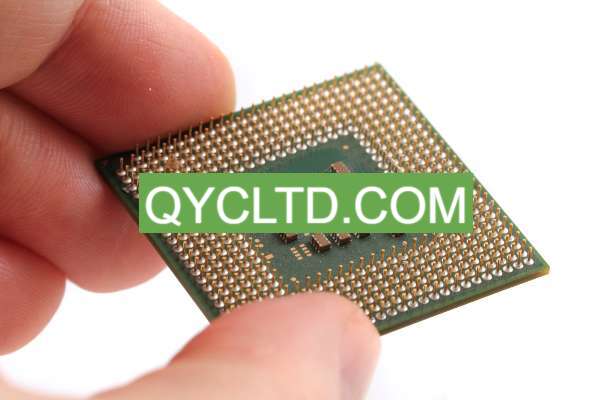TU933 PCB Manufacturer.TU933 PCB Manufacturer specializes in producing high-quality TU933 PCBs, known for their superior performance and reliability. Our advanced manufacturing processes and stringent quality control ensure that each PCB meets industry standards. We cater to various applications, from telecommunications to industrial electronics, providing robust solutions for demanding environments. Trust us for innovative designs and exceptional service in TU933 PCB manufacturing.
TU933 is a high-performance printed circuit board (プリント基板) material that is widely used in applications requiring excellent thermal and electrical properties. Its unique characteristics make it suitable for high-frequency and high-speed digital applications. This article will explore the characteristics, 設計上の考慮事項, 料, 製造プロセス, アプリケーション, and advantages of TU933 PCBs.
What is TU933 PCB?
TU933 PCB refers to a type of PCB made using TU933 material, a specialized laminate that offers exceptional thermal stability and low signal loss. These PCBs are designed to meet the demanding requirements of high-frequency and high-speed digital applications, providing reliable performance and long-term durability.
Characteristics of TU933 PCBs
TU933 PCBs possess several critical characteristics that make them suitable for high-performance applications:
TU933 material offers excellent thermal stability, allowing the PCB to perform reliably under high-temperature conditions. This makes it ideal for applications with significant thermal demands.

TU933PCBメーカー
The material’s low dielectric constant and dissipation factor result in minimal signal loss, ensuring efficient signal transmission and reducing the risk of signal degradation.
TU933 PCBs are designed to handle high-frequency signals, making them suitable for RF and microwave applications.
The material provides good mechanical strength, enhancing the durability and reliability of the PCB in various environments.
TU933 PCBs offer resistance to chemicals, ensuring longevity and reliability in harsh environments.
Design Considerations for TU933 PCBs
Designing TU933 PCBs involves several key considerations to achieve optimal performance:
Choosing the right TU933 material is critical for the PCB’s performance. Factors such as thickness, dielectric constant, and thermal properties must be considered.
PCB上のトレースのレイアウトは、高速データ転送と信号損失の最小化のために最適化する必要があります. これには、正確なトレース形状が含まれます, インピーダンス制御, クロストークが最小限に抑えられています.
過熱を防ぐためには、効果的な熱管理が重要です. これには、サーマルビアの使用も含まれます, ヒートシンク, および効率的に熱を放散するための他の冷却メカニズム.
Maintaining signal integrity at high frequencies requires careful consideration of trace widths, スペーシング, とルーティング. シグナルインテグリティのシミュレーションとテストは、設計を最適化するためによく行われます.
The placement of components must be carefully planned to minimize signal paths and ensure efficient cooling.
Materials Used in TU933 PCBs
The choice of materials for TU933 PCBs is crucial to achieving the desired performance:
The primary material used in these PCBs, TU933 laminate, offers low dielectric constant, low dissipation factor, and excellent thermal stability.
銅は、その優れた導電性により、トレースやパッドに使用される主要な導電性材料です. ゴールドやシルバーなどの表面仕上げは、性能と信頼性を向上させるためによく適用されます.
低損失で安定した誘電特性を持つ高度な誘電体材料を使用して、シグナルインテグリティを維持しながら導電層間の絶縁を提供します.
熱伝導率の高い材料, サーマルビアやヒートシンクなど, 効果的に熱を放散し、過熱を防ぐために組み込まれています.
Manufacturing Process of TU933 PCBs
The manufacturing process of TU933 PCBs involves several precise steps to ensure high quality and performance:
設計フェーズでは、コンピューター支援設計を使用して詳細な回路図とレイアウトを作成します (CADの) ソフトウェア. シグナルインテグリティと熱シミュレーションを実行して、ボード設計を最適化します.
適切な基板と導電性材料は、設計要件と性能仕様に基づいて選択されます.
基板と導電材料の多層を積層して多層構造を形成しています. 正確な位置合わせと制御は、層が適切に接着され、位置合わせされていることを確認するために不可欠です.
回路パターンは、フォトリソグラフィープロセスを使用して作成されます. 感光性フィルム (フォトレジスト) 銅面に適用されます, 紫外線にさらされる (紫外線) マスクを通して光を差し込む, そして、目的の回路パターンを明らかにするために開発されました. 次に、PCBをエッチングして不要な銅を除去します, 痕跡とパッドを残す.
ビアはPCBにドリルで穴を開けられ、異なる層間に垂直の電気的接続を作成します. 次に、これらの穴を銅でメッキして、導電性経路を確立します.
ENIGなどの表面仕上げ (無電解ニッケル浸漬金) または、液浸銀をコンタクトパッドに塗布して、はんだ付け性を高め、導電性トレースを酸化や腐食から保護します.
最終的なPCBが組み立てられます, where components are added. 厳格なテスト, シグナルインテグリティテストを含む, インピーダンス整合試験, および環境ストレス試験, PCBが必要な性能基準を満たしていることを確認するために実施されます.
Applications of TU933 PCBs
TU933 PCBs are used in a wide range of high-performance applications:
TU933 PCBs are essential for high-frequency telecommunications equipment, including base stations, アンテナ, and satellite communication systems.
These PCBs are used in radar systems, navigation equipment, and other high-frequency applications in the aerospace and defense sectors.
TU933 PCBs are used in medical imaging equipment, diagnostic devices, and other high-frequency medical applications.
In the automotive industry, TU933 PCBs are used in advanced driver assistance systems (ADAS), infotainment systems, and other high-frequency applications.
These PCBs are used in industrial automation systems for high-speed data processing and reliable performance in harsh environments.
Advantages of TU933 PCBs
TU933 PCBs offer several advantages that make them indispensable in high-performance applications:
The ability to support high-frequency signals and efficient signal transmission makes TU933 PCBs ideal for demanding applications.
The robust construction and advanced materials used in TU933 PCBs ensure long-term reliability and durability, 厳しい環境でも.
The low signal loss and excellent thermal stability of TU933 material ensure optimal performance and efficiency.
TU933 PCBs can be customized to accommodate a wide range of applications, from telecommunications to medical devices and industrial automation.
FAQ
What materials are commonly used in TU933 PCBs?
Common materials used in TU933 PCBs include the TU933 laminate for the substrate, 導電性トレース用の銅, 絶縁のための高度な誘電体材料. サーマルビアやヒートシンクなどの熱管理材料も、熱を効果的に放散するために使用されています.
How do TU933 PCBs improve telecommunications equipment?
TU933 PCBs improve telecommunications equipment by providing high-frequency performance, low signal loss, and reliable thermal management. This ensures efficient signal transmission and reliable operation in high-frequency telecommunications applications.
Can TU933 PCBs be used in medical devices?
はい, TU933 PCBs are used in medical devices such as medical imaging equipment and diagnostic devices. The high-frequency performance and reliability of TU933 material make it suitable for demanding medical applications.
What are the common applications of TU933 PCBs in the automotive industry?
In the automotive industry, TU933 PCBs are used in advanced driver assistance systems (ADAS), infotainment systems, and other high-frequency applications. The excellent thermal stability and low signal loss of TU933 material ensure reliable performance in automotive environments.
 半導体パッケージ基板メーカー
半導体パッケージ基板メーカー